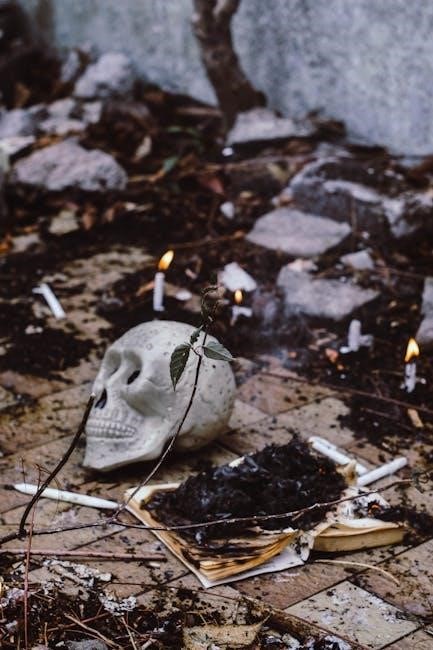voodoo symbols pdf
Voodoo Symbols: An Overview
Voodoo symbols, particularly veves, are integral to Vodou traditions. They act as visual representations of Loa, the spirits, during rituals. These symbols serve as a bridge between the physical and spiritual realms, facilitating communication and invoking specific Loa for assistance.
Voodoo symbolism is a rich tapestry woven from West African religious practices, Roman Catholicism, and indigenous beliefs. Central to this system are “veves,” intricate designs that represent specific spirits, or Loa. These symbols are not mere decorations; they are conduits for invoking the Loa’s presence and power during rituals. Each veve acts as a spiritual key, unlocking a connection between the physical and spiritual worlds. The creation and use of veves involve specific materials and precise execution to effectively communicate with the desired spirit. Understanding voodoo symbolism provides insight into the complex and deeply spiritual world of Vodou.
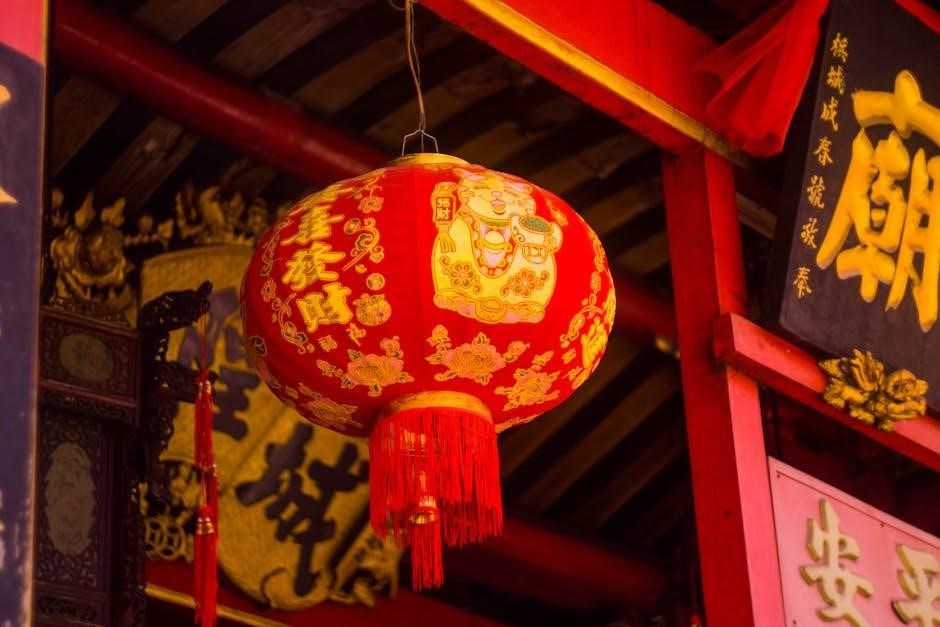
The Significance of Veves
Veves are crucial in Vodou, acting as representations of the Loa (spirits). These symbols are not mere drawings but sacred keys. Veves invoke the Loa’s presence, facilitating communication and channeling their power within rituals.
Veves as Representations of Loa (Spirits)
Veves serve as visual emblems, embodying the essence and attributes of specific Loa within the Vodou religion. Each Loa possesses a unique veve, intricately designed to reflect their individual characteristics, domains of influence, and preferred offerings. These symbols are not arbitrary; they are carefully crafted representations derived from deep-rooted traditions and spiritual insights.
The veve acts as a focal point during rituals, allowing practitioners to connect with the corresponding Loa. By drawing or displaying the veve, devotees invoke the spirit’s presence, seeking guidance, protection, or assistance in various aspects of life. The symbol serves as a beacon, attracting the Loa’s energy and facilitating communication between the human and spiritual realms. They embody deeper meanings and connections to universal energy.
The Role of Veves in Voodoo Rituals
Veves play a crucial role in Vodou rituals, acting as conduits for invoking specific Loa and establishing a connection between the physical and spiritual realms. They are meticulously drawn on the ground using powders like cornmeal, coffee, or flour, serving as a focal point for the ceremony. The act of creating the veve itself is a sacred process, requiring precision and reverence, imbuing the symbol with spiritual energy.
During rituals, practitioners chant, dance, and offer prayers while focusing on the veve, amplifying their intentions and drawing the Loa’s attention. The veve serves as a visual representation of the spirit being invoked, guiding the ritual’s energy and facilitating communication. They serve as keys that unlock connections to divine spirits and ancestral wisdom, further enhancing the power.
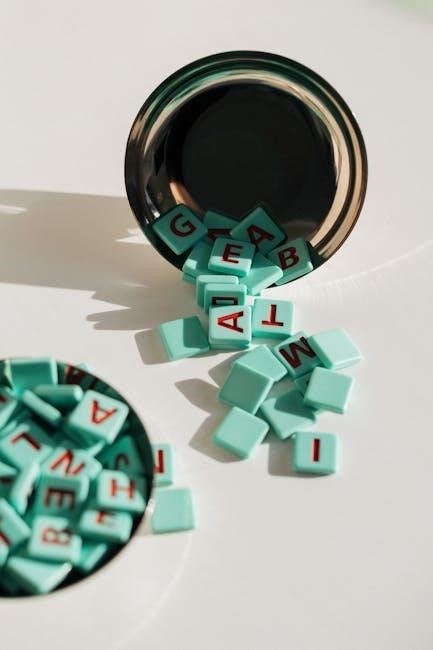
Key Voodoo Symbols and Their Meanings
Voodoo symbols, especially Veves, are rich with meaning. They represent specific Loa, spiritual entities, and their attributes. Understanding these symbols is key to comprehending Vodou rituals and beliefs, unlocking connections to universal energy and wisdom.
Papa Legba: The Gatekeeper
Papa Legba stands as a crucial figure in Vodou, acting as the gatekeeper between the spirit and physical realms. Represented by a cross or crossroads, his symbol signifies the intersection of these worlds. He facilitates communication with other Loa. Legba’s veve often includes a walking cane, reflecting his elder-like demeanor and guidance.
Offerings are frequently made to him at crossroads, acknowledging his role in opening pathways. As the first Loa invoked in ceremonies, he grants or denies access to other spirits. His presence is vital for any successful interaction with the spirit world, embodying transition and opportunity.
Erzulie Freda: Love and Beauty
Erzulie Freda embodies love, beauty, luxury, and femininity within the Vodou pantheon. Her veve frequently incorporates hearts, mirrors, and other symbols associated with romance and allure. She is often depicted as a beautiful, light-skinned woman adorned in fine jewelry and clothing.
Erzulie represents the idealized version of love and beauty. However, her affections can be fickle, reflecting the complexities of relationships. Offerings to Erzulie Freda often include perfumes, jewelry, and sweet foods. Her presence brings an aura of elegance and desire, symbolizing the pursuit of affection and aesthetic pleasure.
Ogoun: The Warrior Spirit
Ogoun embodies the spirit of the warrior, representing strength, courage, and protection. He is associated with iron, fire, and warfare, reflecting his powerful and assertive nature. Ogoun’s veve often features symbols of blacksmithing tools, such as machetes, swords, or hammers, highlighting his connection to metalworking and craftsmanship.
He is seen as a defender and a provider of justice, often invoked for assistance in overcoming obstacles and achieving victory. Red is a color frequently associated with Ogoun, symbolizing his fiery energy and determination. Offerings to Ogoun typically involve rum, cigars, and tools.
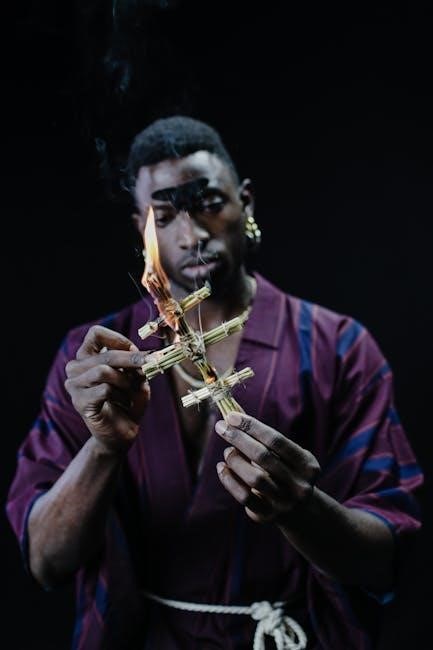
The Creation and Use of Veves
Veves are created with careful intention using materials like cornmeal or ash. These intricate drawings are more than art; they are invocations, serving as focal points to call upon specific Loa during Vodou rituals.
Materials Used in Drawing Veves
The creation of a veve involves specific materials chosen for their symbolic properties and ability to connect with the spiritual realm. Commonly, practitioners use powders like cornmeal, coffee grounds, or even flour to draw these intricate symbols directly onto the ground or ritual space. The choice of material often depends on the specific Loa being invoked, as each spirit may have associations with particular substances.
Ash, another frequently used material, represents transformation and the connection to ancestors. The act of drawing the veve itself is a sacred process, imbuing the chosen material with spiritual energy. The ephemeral nature of the drawn veve underscores the transient nature of the spirit’s presence during the ritual, highlighting the temporary bridge created between worlds.
The Process of Invoking Spirits with Veves
Invoking spirits with veves is a central practice in Vodou rituals. The process begins with preparing the ritual space and carefully drawing the veve that corresponds to the desired Loa. This act is not merely artistic; it’s a sacred creation, imbuing the symbol with the intention and energy of the practitioner. Drumming, chanting, and dancing often accompany the drawing, creating an atmosphere conducive to spiritual communication.
Offerings are typically placed on or near the veve as a sign of respect and supplication to the Loa. As the ritual progresses, the veve acts as a focal point, drawing the spirit’s attention and facilitating its manifestation. Believers may seek to be “ridden” by the Loa, allowing the spirit to temporarily possess their body and communicate directly with the community, offering guidance and blessings. The veve serves as the conduit for this divine interaction.
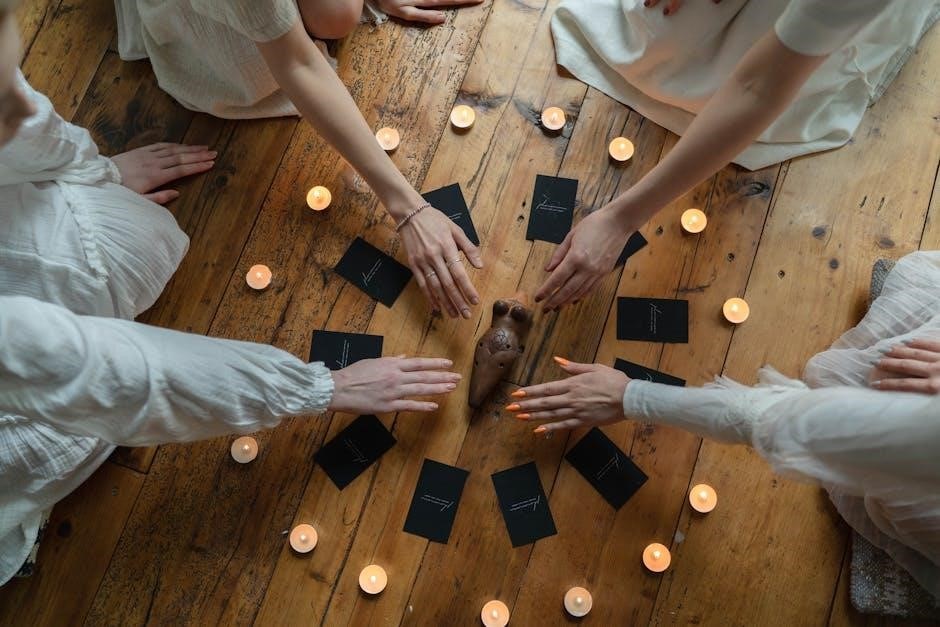
Voodoo Symbols in Different Traditions
Voodoo’s symbols, including veves, vary across traditions like Haitian Vodou and Louisiana Voodoo. Each region incorporates unique cultural elements, influencing the symbolism and practices associated with specific Loa and their veves.
Haitian Vodou
Haitian Vodou is rich in symbolism, with veves serving as crucial representations of the Lwa (spirits). These intricate designs are drawn on the ground during rituals, acting as a focal point for invoking specific spirits. Each veve corresponds to a particular Lwa, embodying their attributes and energies. The creation of veves is a sacred art form, often mastered by initiated priests. Offerings, drumming, chanting, and dancing are common elements in Haitian Vodou ceremonies. The symbols reflect the complex intertwining of African religious practices, Roman Catholicism, and indigenous beliefs. Through veves, practitioners connect with the spirit world, seeking guidance, protection, and blessings from the Lwa.
Louisiana Voodoo
Louisiana Voodoo, a syncretic religion, incorporates unique symbols and practices alongside traditional Vodou elements. While veves remain significant in invoking Loa, the tradition often blends with Catholic saints and local folk beliefs. Offerings play a crucial role in rituals, seeking favor and assistance from the spirits. The use of gris-gris bags, containing symbolic items for protection or luck, is also prevalent. Louisiana Voodoo emphasizes a close connection with nature and ancestral spirits. The symbolism often reflects the history and cultural landscape of the region, blending African, European, and Native American influences. The veves are drawn with powdered substances like brick dust or coffee grounds, demonstrating the unique adaptations of Vodou practice in Louisiana.
